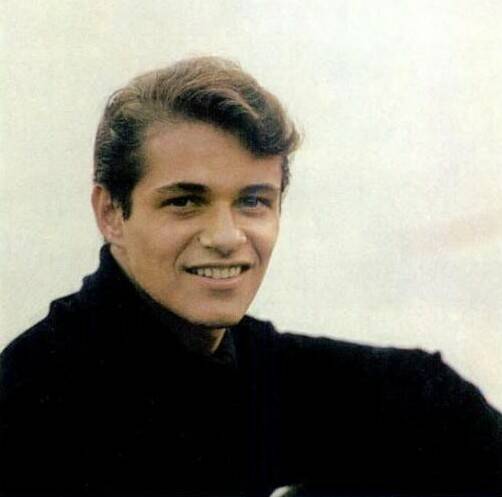NEPA native Ed Rambeau talks about his music career, 60 years after his biggest hit
Ed Rambeau was born in Hazleton in 1942, and he was always a singer. At Hazleton High School, he wrote and played the lead in his school play. When he met Bud Rehak, he found a manager and a pianist to accompany him in his musical pursuits.
With Rehak, Rambeau performed at record hops, and those appearances caught the attention of Plymouth-based disc jockey Jim Ward, who had connections at Swan Records in Philadelphia. Through Ward, Rambeau got an audition at Swan, where he sang for a trio of record executives.
“I sang a medley of like 26 songs,” Rambeau recalled. “And [Artists and Repertoire Director] Frank Slay turned to the other three guys and said, ‘He’s great, but what do we do with a mayo Johnny Mathis?’”
The executives did find something to do with Rambeau. They put him on tape and signed him the same day as the audition.
A few years after his signing, in 1965, Rambeau would prove to be a more than worthy performer with a signature hit to his name. Sixty years removed from that hit track, Rambeau is looking back on his musical journey.
Writing the path to success
Rambeau’s early career on the national music scene was more noted for his songwriting than his performing, though he did a bit of both. He worked as a staff songwriter for Bob Crewe, who is most noted for his writing and producing credits with the Four Seasons.
He collaborated with Crewe in writing the track “Navy Blue,” which was recorded and released in 1963. The song peaked at the number 6 spot on the Billboard Hot 100 in March 1964, trailing only “Java” by Al Hirt, “Dawn (Go Away) by the Four Seasons, and three songs by the upstart Beatles: “I Wanna Hold Your Hand,” “She Loves You,” and “Please Please Me.”
A sequel to “Navy Blue” called “Kiss Me Sailor,” also recorded by Renay, was written by Rambeau and Rehak and cracked the top half of the Billboard Hot 100 as well.
A hit of his own, in a sense
In the mid-1960s, Crewe traveled to London to look for new material, as the British Invasion — jumpstarted by those same Beatles — had taken the American music industry by storm. While across the pond, Crewe found a demo by a British band, Unit 4+2.
“He came back with this song called ‘Concrete and Clay,’ which was written by two of the guys who were members of the Unit 4 + 2,’” Rambeau said. “I was not crazy about it, to be quite honest with you, but Bob insisted.”
Rambeau recorded and released “Concrete and Clay” in 1965. Two weeks later, the demo by Unit 4+2 was released to the public.
Rambeau noted the fuller sound of his more polished recording of the song, which featured a guitar part by veteran musician and arranger Al Caiola. Some radio stations were given the Rambeau version, while others received the one by Unit 4+2. It set up a peculiar musical rivalry between the tracks, which chased each other up the Billboard charts. Rambeau’s version peaked at number 35.
“Anybody that heard my version knew my version, and the [Unit 4+2] one was the cover,” Rambeau said of the unusual rollout of “Concrete and Clay.” “And to anybody who heard [Unit 4+2]’s version in their hometown, mine was the cover.”
Rambeau had the powerful California market on his side, which led to a pair of performances on the musical variety series “Shindig!” Both of those appearances are still available to view on YouTube.
Surprised by success
An album, “Eddie Rambeau Sings Concrete And Clay,” was also released in 1965, though Rambeau himself remains surprised by the title track’s success.
“If I could answer that question, I’d be a millionaire,” Rambeau said when asked why “Concrete and Clay” remains his most lasting track as a performing artist.
The 14-track album features songs like “My Name is Mud,” “I Just Need Your Love” and “Yesterday’s Newspapers,” all of which were co-written by Rambeau. He considers the latter two songs, and others in repertoire, to be superior to “Concrete and Clay.”
“‘Don’t Believe Him,’ which was the B-side of ‘Concrete and Clay,’ I personally thought was the better song and a better recording, and a lot of people have said that along the way, too,” Rambeau said. “There’s no rhyme and reason to why something becomes a hit. If it’s fortunate enough to get enough airplay across the country, it will happen.”
60 years later
The passage of time has been kind to Rambeau, who still records original music. Still, he can admit that the idea of six decades being gone since “Concrete and Clay” is a bit daunting.
“It’s damn scary,” Rambeau said of the time that has passed since his biggest hit’s release.
Over time, Rambeau has added acting credits, novels, and photography to his resume. He posts pictures of flowers and the places he’s traveled to on his Facebook page, and continues to receive praise for his artistic ventures.
Indeed, his travels are largely thanks to his time performing on cruise ships. As for his novels, he’s written two: “Forbidden Steps” — which he called a “racy murder-mystery” — and “From a Distant Mirror.”
Though he can no longer perform live, Rambeau still vividly remembers the era in which he was 22 and touring across the United States and Europe with a hit record.
“You never know where life is going to take you,” Rambeau said. “You really don’t.”






